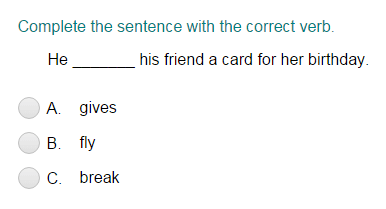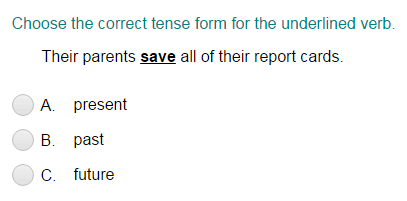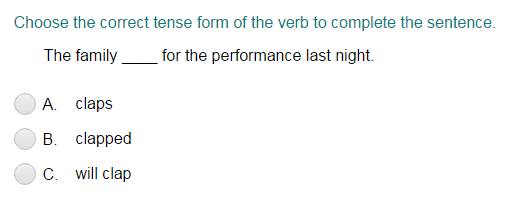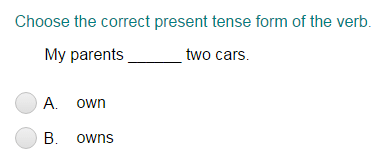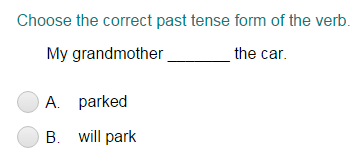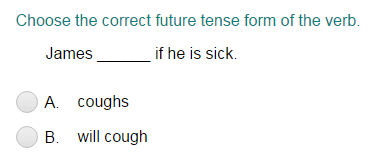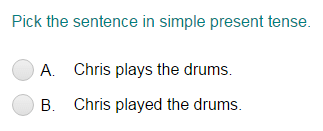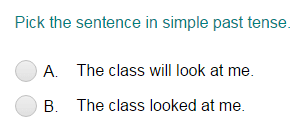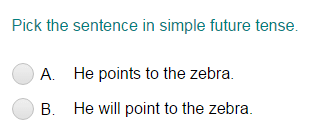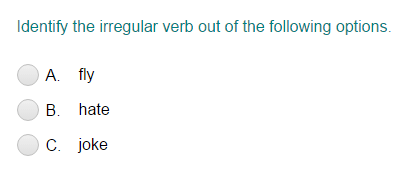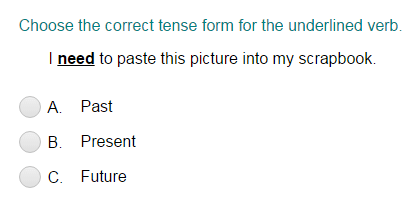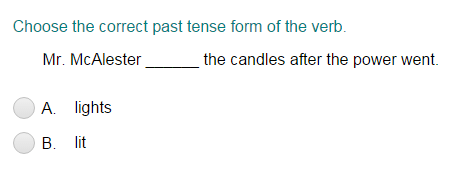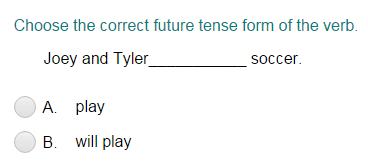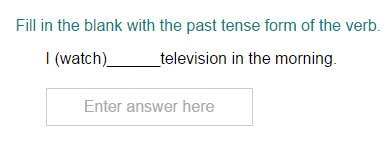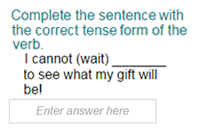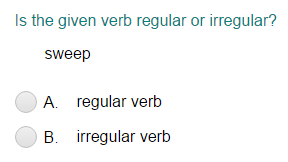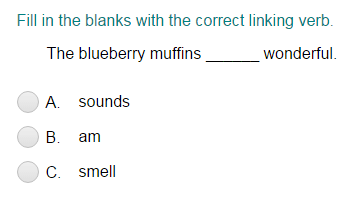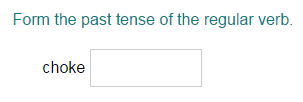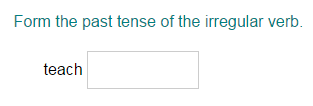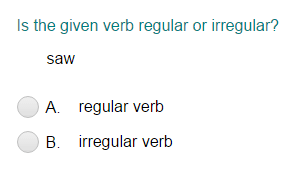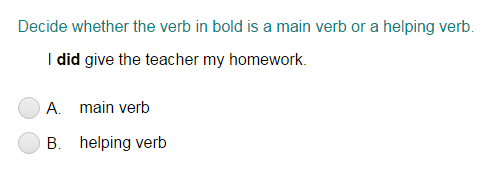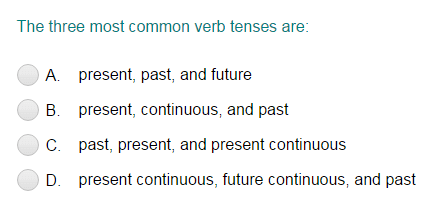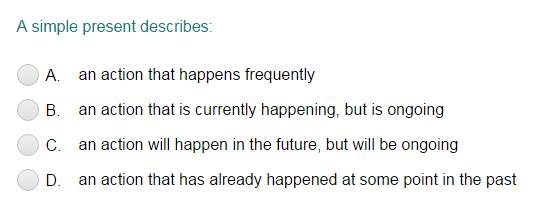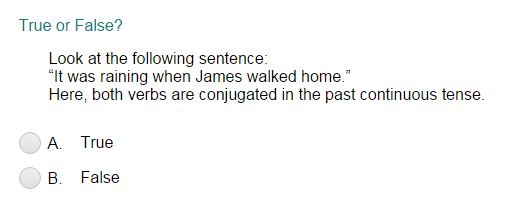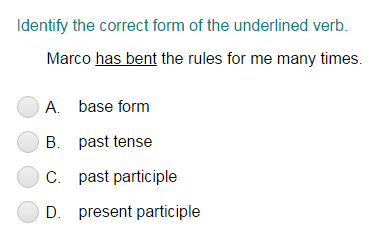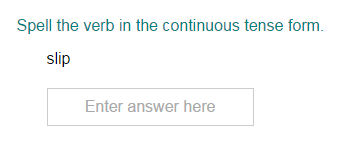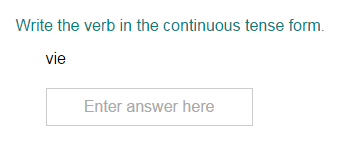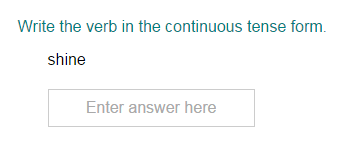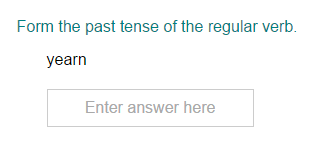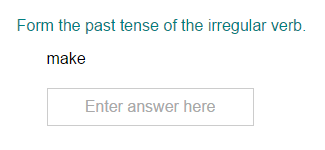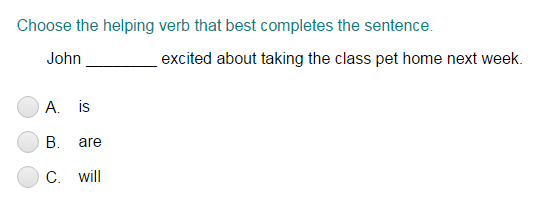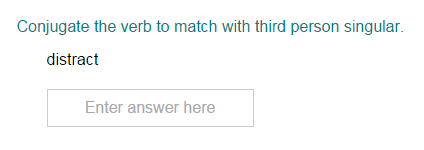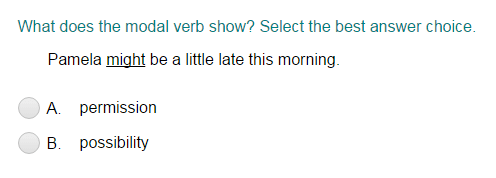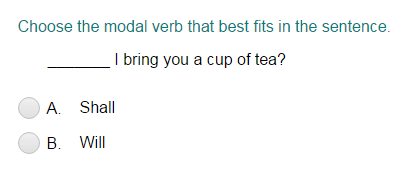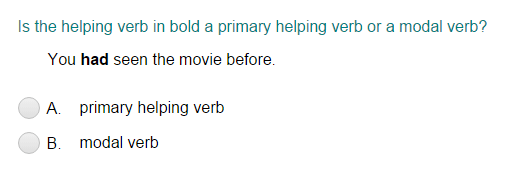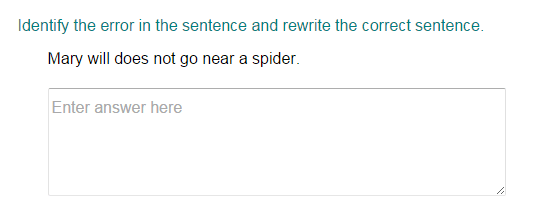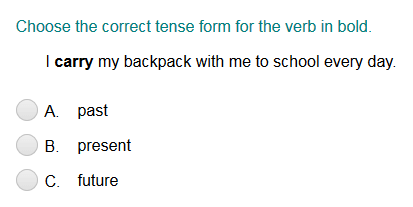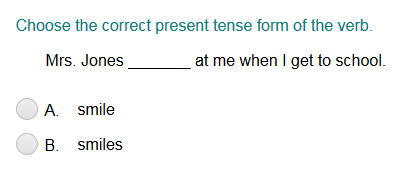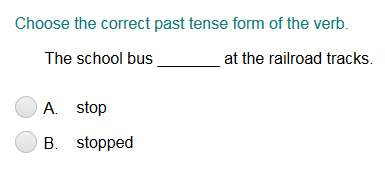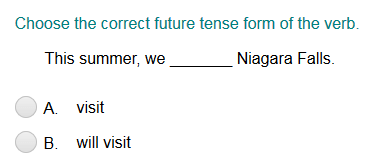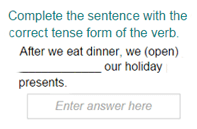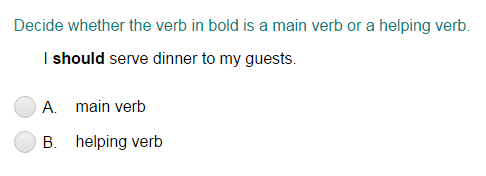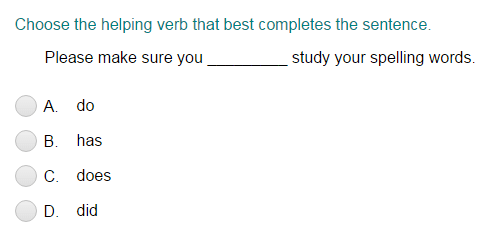Login as parent/teacher to assign this.
What are verbs and give 10 examples?
Progress
Identifying Verbs Part 1
Identifying Verb in a Sentence Part 1
Using Verbs to Complete Sentences
Identifying the Tense Form of The Verb
Completing a Sentence with the Correct Verb Tense Form
Completing a Sentence Using Present Tense Form of the Verb
Completing a Sentence Using Past Tense Form of the Verb
Completing a Sentence Using Future Tense Form of the Verb
Identifying the Sentence in Present Tense Form
Identifying the Sentence in Past Tense Form
Identifying the Sentence in Future Tense Form
Identifying the Irregular Verb
Choosing the Correct Irregular Verb in Past Tense Form to Complete a Sentence
Using the Correct Past Tense Form of an Irregular Verb to Complete a Sentence
Identifying the Sentence that Uses the Correct Past Tense Form of the Given Irregular Verb
Identifying the Correct Tense Form Part 1
Choosing the Correct Present Tense Verb Part 1
Choosing the Correct Past Tense Verb Part 1
Choosing the Correct Future Tense Verb Part 1
Using the Present Tense Form of a Verb
Using the Past Tense Form of a Verb Part 2
Using the Future Tense Form of a Verb Part 3
Identifying the Verb with Correct Tense Form
Completing the Sentence with Correct Tense Form Part 1
Identifying a Verb as Regular or Irregular
Completing a Sentence with the Past Tense Form of an Irregular Verb
Conjugating a Verb
Identifying a Linking Verb
Using a Linking Verb to Complete a Sentence
Identifying the Word in Bold as an Action Verb or a Linking Verb
Forming Past Tense and Past Participle of a Regular Verb
Completing a Sentence with the Past Participle Form of an Irregular Verb
Forming the Past Tense, Present Tense, and Past Participle of an Irregular Verb
Correct form of the Verb
Identifying Verb in a Sentence Part 3
Identifying the Verb as Regular or Irregular
Identifying the Word as Main Verb or Helping Verb
Verb Tenses - A Review
Present Continuous - A Review
Past Continuous - A Review
Future Continuous - A Review
Identifying Verb Phrase in a Sentence Part 1
Writing a Sentence in the Present Continuous Tense
Writing a Sentence in the Past Continuous Tense
Writing a Sentence in the Future Continuous Tense
Identifying the Correct Tense Form of the Verb
Identifying the Correct Form of the Verb Part 2
Forming the Present Continuous Verb Tense
Completing a Sentence with the Correct Simple Past Tense Form of an Irregular Verb
Changing Verbs Ending in Vowel Consonant to Continuous Tense
Changing Verbs Ending in the Vowels IE to Continuous Tense
Changing Verbs Ending in the Vowel E to Continuous Tense
Completing a Sentence with the Correct Past Participle Form of an Irregular Verb
Regular Verbs - Forming Simple Past and Present Participle
Irregular Verbs - Forming Simple Past, Present Participle, and Past Participle
Identifying Helping Verb in a Sentence Part 1
Identifying Helping Verb in a Sentence Part 2
Identifying Helping Verb in a Sentence Part 3
Completing the Sentence with the Correct Helping Verb Part 1
Conjugating Verbs
Identifying What the Modal Verb Expresses
Identifying What the Semi-Modal Verb Expresses
Choosing the Best Modal Verb to Complete a Sentence
Completing a Sentence with the Correct Modal Verb
Completing a Sentence with the Correct Semi-Modal Verb
Identifying the Helping Verb as Primary Helping Verb or Modal Verb
Spotting Errors and Rectifying the Sentence
Identifying Verb in a Sentence Part 4
Identifying Verb Phrase in a Sentence Part 2
Identifying the Correct Tense Form Part 2
Choosing the Correct Present Tense Verb Part 2
Choosing the Correct Past Tense Verb Part 2
Choosing the Correct Future Tense Verb Part 2
Using the Present Tense Form of a Verb Part 1
Using the Past Tense Form of a Verb Part 2
Using the Future Tense Form of a Verb Part 3
Completing the Sentence with Correct Tense Form Part 2
Identifying Helping Verb in a Sentence Part 4
Identifying a Verb as Main or Helping Verb
Identifying Helping Verb in a Sentence Part 5
Completing the Sentence with the Correct Helping Verb Part 2
Identifying a Helping Verb as Primary or Modal Verb
What are verbs and give 10 examples?
Verbs are the most important part of any sentence because they tell what is happening in the sentence. For young readers, figuring out what the action is in the sentence is extremely crucial, and Turtle Diary understands that students need to practice a skill in order to make progress in understanding it. Whether it be past tenses practice, simple present tense practice, or simply to practice verb tenses in general, the exercise of verbs is extremely important.
There are two types of verbs that students need to learn and use for verb practice. Action verbs are words that show action or movement in a sentence. These are words like dance, sing, scream, fall, and run. The other type of verbs are known as 'state of being' verbs. These are words that connect the subject to another word in the sentence that renames or describes the sentence. State of being verbs include words like am, is, was, seems, and feels. Students need to know what verbs are so that they can understand how to create sentences of their own with verbs in them.
Since verbs can be so confusing, especially for students who are just starting out, it is important to get lots of practice. That is where the free quizzes from Turtle Diary for verb practice really come in handy. Students can get a quick refresher for each topic and then take a quiz to see if they understand the topic. Students receive immediate feedback if they are correct or incorrect for each question, and this is helpful for students to learn as they go. If students log in, they can also track their progress.
Turtle Diary offers practice with verbs for students in grades 1-5. Students can practice verb tenses, including past tenses practice and simple present tense practice. Just like exercising your body to keep it strong, the exercise of verbs is important to help students get a firm grasp on the main part of each sentence.


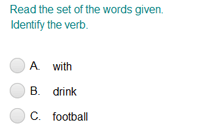

 Please Wait
Please Wait

